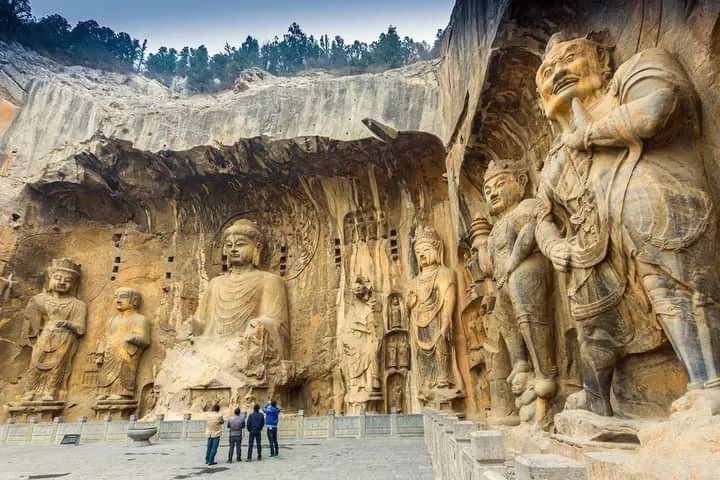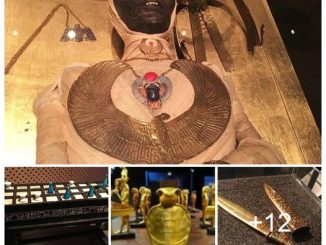Nestled within the serene landscape of Henan Province, China, lies a cultural treasure that has stood the test of time — the Longmen Grottoes. With over 2,300 caves adorned with more than 100,000 statues of all sizes, this UNESCO-recognized World Heritage site represents the pinnacle of Chinese stone carving art. Join us on a journey through the ages as we delve into the history, significance, and enduring beauty of the Longmen Grottoes.

A Testament to Artistry: The Longmen Grottoes, dating back to the 4th to 10th centuries CE, are a testament to the artistic mastery of ancient Chinese craftsmen. Carved into the limestone cliffs overlooking the Yi River, these grottoes showcase a breathtaking array of sculptures, ranging from small Buddhist figures to colossal statues of Bodhisattvas and deities. Each intricately carved statue is a testament to the skill, dedication, and spiritual devotion of its creators, who labored for centuries to create this awe-inspiring masterpiece.
Spiritual Sanctuary: For centuries, the Longmen Grottoes have served as a spiritual sanctuary for pilgrims and worshippers seeking solace and enlightenment. The caves are adorned with images of Buddhist deities, scenes from Buddhist scriptures, and intricate reliefs depicting the life of the Buddha. As visitors wander through the labyrinthine corridors of the grottoes, they are enveloped in an atmosphere of tranquility and reverence, as if stepping into a sacred realm frozen in time.
UNESCO World Heritage Site: In recognition of its cultural significance and artistic value, the Longmen Grottoes were designated a UNESCO World Heritage site in 2000. This prestigious designation acknowledges the site’s outstanding universal value and highlights its importance as a cultural heritage of humanity. As a UNESCO World Heritage site, the Longmen Grottoes attract visitors from around the globe, who come to marvel at its beauty and to pay homage to its rich cultural heritage.
Preserving the Past: As custodians of this ancient treasure, it is our responsibility to ensure the preservation and protection of the Longmen Grottoes for future generations. The site faces threats from environmental factors, such as erosion and pollution, as well as human activities, including tourism and development. Efforts to conserve the grottoes are ongoing, with measures in place to monitor and mitigate potential risks. By supporting conservation initiatives and promoting responsible tourism, we can help safeguard this invaluable cultural heritage for the enjoyment of future generations.
Conclusion:
As we conclude our exploration of the Longmen Grottoes, let us marvel at the enduring beauty and cultural significance of this ancient masterpiece. From its exquisite sculptures to its spiritual sanctuaries, the grottoes stand as a testament to the artistic genius and spiritual devotion of ancient Chinese civilization. As we continue to cherish and protect this cultural treasure, let us also reflect on the timeless lessons and profound insights that the Longmen Grottoes impart, reminding us of the enduring power of art, faith, and human creativity.
Ancient Discoveries: The Longmen Grottoes are just one of many ancient wonders that continue to inspire awe and fascination. From the Great Wall of China to the Terracotta Army, China is home to a wealth of archaeological treasures waiting to be discovered. Each discovery offers a window into the rich tapestry of Chinese history and culture, enriching our understanding of the past and shaping our appreciation for the present. As we continue to explore the ancient world, let us remain vigilant in our efforts to preserve and protect these priceless artifacts for the benefit of all.


